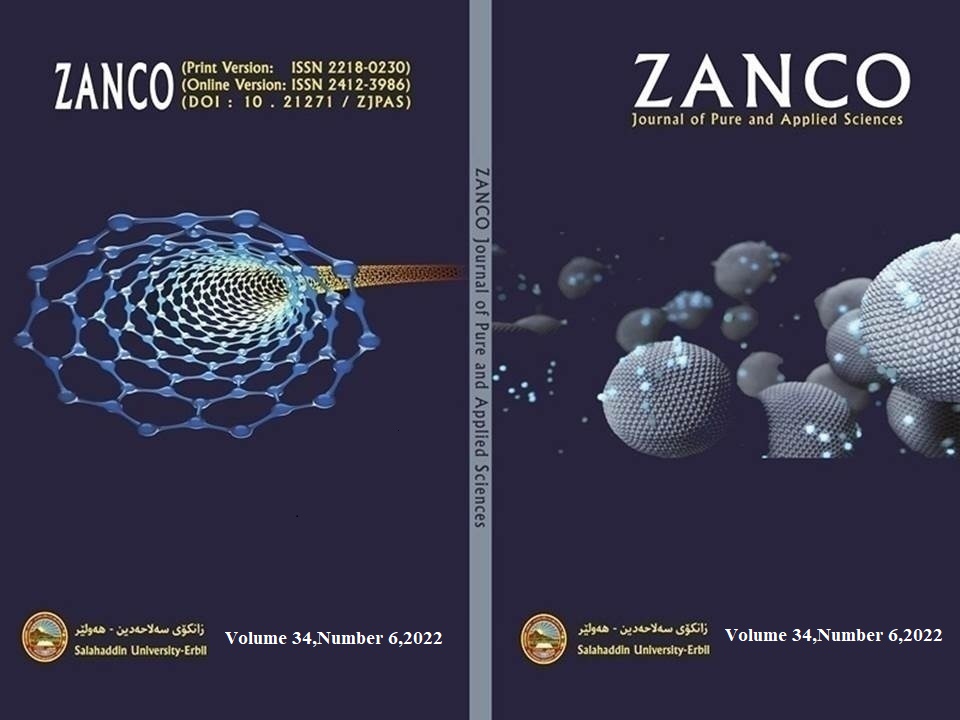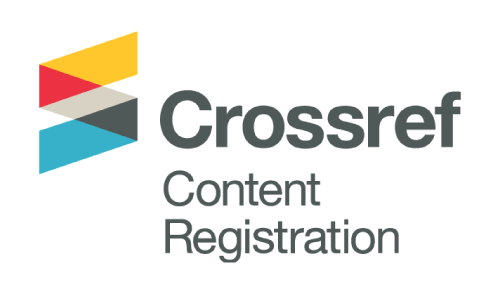Impacts of Gadolinium-Based MRI contrast Agent on Hematological and Biochemical Tests for the Human Volunteers.
DOI:
https://doi.org/10.21271/ZJPAS.34.6.5Keywords:
: MRI; contrast materials; hematological and biochemical tests; radiobiologyAbstract
Magnetic resonance imaging (MRI) Gadolinium-Containing contrast agents are used in combination with MRI in some situations. The effects of gadolinium-based MRI contrast agent (MAGNEVIST® Gadopentetate Dimeglumine Injection Bayer Standard 469 mg/ml (0.5 mmol/ml) on some hematological and biochemical tests for human male volunteers have been investigated. The study consisted of nine healthy individuals of human male volunteers; they were injected with intravenous (IV) contrast without being exposed to MRI. The cases are divided into four subgroups based on how long and how many times of blood samples were withdrawn after the intravenous (IV) contrast injection (9, 25, and 40 minutes). Blood samples were examined for twenty-seven hematological and biochemical parameters. The results proved that; after 9 min of injection with IV contrast, the WBCs count, LYM, MID%, and ALT decreased by 6%,6%, 4%, and 5%, respectively, and the concentration of GRA% and ESR increased by 5%. 25min after injection, concentrations of PLT increased significantly (P < 0.05) by 4%, PCT %, LPCR %, MID, and ESR are increased non-significantly (P > 0.05) by 4%, 5%, 7%, and 26%, respectively. After 40min of injections; MID, and MID% increased by 11% and 12%, respectively, and AST decreased by 4%. The maximum rise in ESR was increased by 31%. There was no substantial variation with time can be seen in electrolytes; Sodium (Na+), Potassium (K+), and Chloride (Cl-) under the effect of the intravenous contrast injection.
References
ABDULLA, K. N., ISMAIL, A. H., MUSTAFA, B. T., ABDULKAREEM, S. M. J. Z. J. O. P. & SCIENCES, A. 2022. Identifying and analyzing the effects of electric fields on erythrocyte sedimentation rate. 34, 1-5.
ABU-ALFA, A. K. J. A. I. C. K. D. 2011. Nephrogenic systemic fibrosis and gadolinium-based contrast agents. 18, 188-198.
FERRIS, N. & GOERGEN, S. J. I. R. W. I. C. A. G.-C.-M. U. N. 2016. Gadolinium contrast medium (MRI contrast agents). 22.
FLOOD, T. F., STENCE, N. V., MALONEY, J. A. & MIRSKY, D. M. J. R. 2017. Pediatric brain: repeated exposure to linear gadolinium-based contrast material is associated with increased signal intensity at unenhanced T1-weighted MR imaging. 282, 222-228.
GRANATA, V., CASCELLA, M., FUSCO, R., CATALANO, O., FILICE, S., SCHIAVONE, V., IZZO, F., CUOMO, A. & PETRILLO, A. J. B. R. I. 2016. Immediate adverse reactions to gadolinium-based MR contrast media: a retrospective analysis on 10,608 examinations. 2016.
GROBNER, T. J. N. D. T. 2006. Gadolinium–a specific trigger for the development of nephrogenic fibrosing dermopathy and nephrogenic systemic fibrosis? 21, 1104-1108.
HUI, F. & MULLINS, M. J. A. J. O. N. 2009. Persistence of gadolinium contrast enhancement in CSF: a possible harbinger of gadolinium neurotoxicity? 30, e1-e1.
ISMAIL, A. H., ABDULLA, K. N. J. R. P. & CHEMISTRY 2021. Biochemical and hematological study of the effects of annual exposure radiation doses on the operators of X-ray and CT-scan in some Erbil hospitals. 184, 109466.
KOBAYASHI, M., LEVENDOVSZKY, S. R., HIPPE, D. S., HASEGAWA, M., MURATA, N., MURATA, K., MARSHALL, D. A., GONZALEZ-CUYAR, L. F. & MARAVILLA, K. R. J. R. 2021. Comparison of human tissue gadolinium retention and elimination between gadoteridol and gadobenate. 300, 559-569.
LOHRKE, J., FRENZEL, T., ENDRIKAT, J., ALVES, F. C., GRIST, T. M., LAW, M., LEE, J. M., LEINER, T., LI, K.-C. & NIKOLAOU, K. J. A. I. T. 2016. 25 years of contrast-enhanced MRI: developments, current challenges and future perspectives. 33, 1-28.
LOHRKE, J., FRISK, A.-L., FRENZEL, T., SCHÖCKEL, L., ROSENBRUCH, M., JOST, G., LENHARD, D. C., SIEBER, M. A., NISCHWITZ, V. & KÜPPERS, A. J. I. R. 2017. Histology and gadolinium distribution in the rodent brain after the administration of cumulative high doses of linear and macrocyclic gadolinium-based contrast agents. 52, 324.
MARASINI, R., THANH NGUYEN, T. D., ARYAL, S. J. W. I. R. N. & NANOBIOTECHNOLOGY 2020. Integration of gadolinium in nanostructure for contrast enhanced‐magnetic resonance imaging. 12, e1580.
MARCKMANN, P., SKOV, L., ROSSEN, K., DUPONT, A., DAMHOLT, M. B., HEAF, J. G. & THOMSEN, H. S. J. J. O. T. A. S. O. N. 2006. Nephrogenic systemic fibrosis: suspected causative role of gadodiamide used for contrast-enhanced magnetic resonance imaging. 17, 2359-2362.
MOSER, F., WATTERSON, C., WEISS, S., AUSTIN, M., MIROCHA, J., PRASAD, R. & WANG, J. J. A. J. O. N. 2018. High signal intensity in the dentate nucleus and globus pallidus on unenhanced T1-weighted MR images: comparison between gadobutrol and linear gadolinium-based contrast agents. 39, 421-426.
MURATA, N., GONZALEZ-CUYAR, L. F., MURATA, K., FLIGNER, C., DILLS, R., HIPPE, D. & MARAVILLA, K. R. J. I. R. 2016. Macrocyclic and other non–group 1 gadolinium contrast agents deposit low levels of gadolinium in brain and bone tissue: preliminary results from 9 patients with normal renal function. 51, 447-453.
MYRISSA, A., BRAEUER, S., MARTINELLI, E., WILLUMEIT-RÖMER, R., GOESSLER, W. & WEINBERG, A. M. J. A. B. 2017. Gadolinium accumulation in organs of Sprague–Dawley® rats after implantation of a biodegradable magnesium-gadolinium alloy. 48, 521-529.
RAMALHO, J., CASTILLO, M., ALOBAIDY, M., NUNES, R. H., RAMALHO, M., DALE, B. M. & SEMELKA, R. C. J. R. 2015. High signal intensity in globus pallidus and dentate nucleus on unenhanced T1-weighted MR images: evaluation of two linear gadolinium-based contrast agents. 276, 836-844.
RAMALHO, J., SEMELKA, R., RAMALHO, M., NUNES, R., ALOBAIDY, M. & CASTILLO, M. J. A. J. O. N. 2016. Gadolinium-based contrast agent accumulation and toxicity: an update. 37, 1192-1198.
ROGOSNITZKY, M. & BRANCH, S. J. B. 2016. Gadolinium-based contrast agent toxicity: a review of known and proposed mechanisms. 29, 365-376.
STANESCU, A. L., SHAW, D. W., MURATA, N., MURATA, K., RUTLEDGE, J. C., MALONEY, E. & MARAVILLA, K. R. J. P. R. 2020. Brain tissue gadolinium retention in pediatric patients after contrast-enhanced magnetic resonance exams: pathological confirmation. 50, 388-396.
STOJANOV, D. A., ARACKI-TRENKIC, A., VOJINOVIC, S., BENEDETO-STOJANOV, D. & LJUBISAVLJEVIC, S. J. E. R. 2016. Increasing signal intensity within the dentate nucleus and globus pallidus on unenhanced T1W magnetic resonance images in patients with relapsing-remitting multiple sclerosis: correlation with cumulative dose of a macrocyclic gadolinium-based contrast agent, gadobutrol. 26, 807-815.
UOSEF, A., VILLAGRAN, M., KUBIAK, J. Z., WOSIK, J., GHOBRIAL, R. M., KLOC, M. J. P. I. M. R.-P. & MEDICINE, F. 2020. Side effects of gadolinium MRI contrast agents. 16, 49-52.
XIAO, Y.-D., PAUDEL, R., LIU, J., MA, C., ZHANG, Z.-S. & ZHOU, S.-K. J. I. J. O. M. M. 2016. MRI contrast agents: Classification and application. 38, 1319-1326.
Downloads
Published
How to Cite
Issue
Section
License
Copyright (c) 2023 Belan Mohammed Ibrahim, Asaad Hamid Ismail

This work is licensed under a Creative Commons Attribution 4.0 International License.












